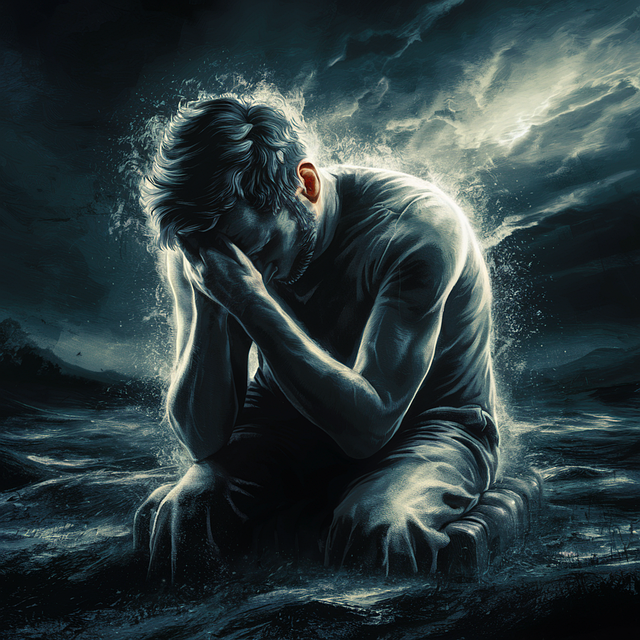The media's portrayal of mental illness is evolving to challenge stereotypes and reduce stigma, with organizations like Broomfield Abuse Survivors Therapy (BAST) leading this change. BAST promotes accurate Mental Health Awareness and Burnout Prevention through innovative therapy practices and authentic storytelling in media. This approach encourages open conversations about diverse mental health experiences, fosters empathy, and inspires recovery journeys, ultimately helping people seek help when needed. By involving individuals with lived experiences in media production, BAST challenges stereotypes and shifts the narrative to empowerment, emphasizing resilience, recovery, and accessible support resources.
Mental illness representation in media plays a pivotal role in shaping public understanding and attitudes. However, the current landscape often falls short, perpetuating stereotypes and misconceptions. This article delves into this critical issue through two key sections. Firstly, we explore the current state of mental illness depiction in media, highlighting challenges and their impact. Then, we present a case study on Broomfield Abuse Survivors Therapy, showcasing positive representation that fosters awareness and empathy. Subsequently, we offer strategies to enhance media portrayal, ultimately contributing to better mental health understanding and support.
- Understanding Mental Illness Representation in Media: The Current Landscape
- Broomfield Abuse Survivors Therapy: A Case Study on Positive Representation
- Strategies and Solutions: Enhancing Media Portrayal for Better Mental Health Awareness
Understanding Mental Illness Representation in Media: The Current Landscape

The current landscape of mental illness representation in media is a complex and evolving narrative. For too long, mental health issues have been portrayed stereotypically or ignored altogether, leading to widespread misconceptions and stigma. However, there’s a growing movement towards more accurate and nuanced storytelling, with initiatives like Broomfield Abuse Survivors Therapy (BAST) at the forefront of this change. BAST is dedicated to promoting Mental Health Awareness and Burnout Prevention by providing resources and support for those struggling with mental health challenges.
Media has a profound impact on shaping public perception, making responsible representation crucial. The focus should be on creating authentic stories that reflect the diverse experiences of individuals with various mental health conditions. Encouraging open conversations about mental illness can foster Self-Care Practices and encourage people to seek help when needed. By challenging outdated tropes and stereotypes, media platforms have the potential to contribute significantly to breaking down barriers and promoting a more compassionate understanding of mental wellness.
Broomfield Abuse Survivors Therapy: A Case Study on Positive Representation

Broomfield Abuse Survivors Therapy (BAST) stands as a powerful example of positive mental health representation in media and therapy practices. This innovative approach has been instrumental in challenging stereotypes and fostering public awareness campaigns that promote understanding and empathy for survivors of abuse and mental illness. BAST focuses on developing comprehensive strategies that integrate stress management techniques and positive thinking exercises tailored to the unique needs of each individual.
Through their work, BAST demonstrates how media can be utilized as a tool to humanize complex issues like mental health struggles. By sharing authentic narratives and showcasing diverse characters, they contribute significantly to changing societal perceptions. This strategy not only encourages open dialogue but also inspires hope among those dealing with similar challenges, emphasizing that recovery is possible through the right support systems and self-care practices.
Strategies and Solutions: Enhancing Media Portrayal for Better Mental Health Awareness

Media representation plays a pivotal role in shaping public perception about mental health. To bridge the gap between reality and portrayal, several strategies can be employed. One effective approach is to involve people with lived experiences as consultants or contributors during production. This ensures authenticity and challenges stereotypical narratives, offering a more nuanced understanding of various mental health conditions.
Additionally, media outlets can prioritize storytelling that focuses on resilience, recovery, and resources available for support. By showcasing individuals overcoming challenges through accessible avenues like therapy (e.g., Broomfield Abuse Survivors Therapy), social skills training, and anxiety relief techniques, the narrative shifts from stigmatization to empowerment. Encouraging responsible risk management planning for mental health professionals can further ensure accurate and sensitive depiction of these issues, fostering a more empathetic society.
Mental illness representation in media has evolved, but challenges remain. As highlighted by the case study on Broomfield Abuse Survivors Therapy, positive portrayals can significantly impact mental health awareness and reduce stigma. By implementing strategies such as diverse storytelling, accurate character development, and consultation with experts, media can play a crucial role in fostering empathy and understanding. Continued efforts to enhance mental illness representation are essential for promoting better mental health outcomes and creating a more inclusive society.














